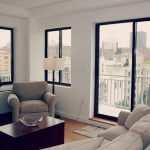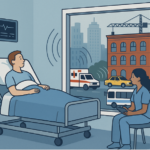If extraneous noise is a problem in your living space, there are several ways to cut back on the unwanted sound. From temporary solutions like placing a towel under the door to long-lasting enhancements like installing Soundproof Windows, the key is finding which solution is best for you and your family. Be sure to follow these dos and don’ts to make the most efficient use of your noise reduction efforts.
Do – Clarify the Problem
While living in a lively city such as NYC, there are two types of sound frequencies that can be heard inside a home: high and low frequencies. Everyone’s tolerance for noise is different, so knowing where your threshold is for outside noise is key to finding a solution that works for you. Some may need minor modifications to their home or office, while others need to seek a more permanent solution.
Do – Add a Personal Touch
Additions like fabric curtains can absorb noise. Even though sound is reduced, personal style does not have to be sacrificed. Similar to additions such as weatherizing strips and caulk, adding in noise blocking curtains over your Windows are simply an option to decrease noise, and do not completely eliminate all sounds from entering your home.

Do – Check your Windows
Over time, Windows may create gaps or holes that can provide an additional way for noise to enter a home. Weatherizing strips and new caulk are simple and cost-effective solutions, but while often times a temporary plug to a portion of the sound, these typically aren’t enough to completely block the sound.
Do – Install Soundproof Window
Soundproof Windows reduce up to 95% of outside noise. Throughout the years, they have reigned as the easiest and most effective means of permanently blocking sound from entering your home. Requiring no construction, no modification to the look of your internal and exterior Window, and an added bonus of increasing your home’s value; it’s a no-brainer for most city-dwellers.
Don’t – Overlook the STC Scale
The STC, or sound transmission class scale, is a single number rating of the effectiveness of a material to impede the transmission of airborne sound. STC ratings are the only way to accurately measure how much noise is entering your home or office. When looking to invest in Soundproof Windows, it’s important to realize that a typical Window has an STC rating of 18, while a 27-28 is ideal to fully block out the unwanted noise. Make sure you do research on the STC rating, the current noise level in your home, as well as the optimal level so that you can measure the impact of both temporary and permanent Soundproofing solutions.
Don’t – Settle for Low-Quality Glass
The glass incorporated in Soundproof Windows is an essential consideration. The most effective, noise-reducing glass is known as laminated glass. Thick, laminated glass is an innovative measure. If you’re looking to invest in Soundproof Windows, make sure you ask potential companies to educate you on their process and the materials used.
Don’t – Skimp on Research
Weigh your options. There are pros and cons to all options, but you are the only one who knows exactly what you need. For example, if you are tight on budget for a few months, it may be worth doing some self-caulking around the unit to see if that helps reduce the noise. If you know noise will be a long-term problem, look into investing in a permanent solution.
Soundproof Windows don’t require any construction, they increase the value of your unit, and they increase your quality of life. CitiQuiet is so confident in our Soundproof Windows that we offer a 100% satisfaction guarantee. Call us today for any Soundproofing questions as well as a free, no strings attached, estimate.




